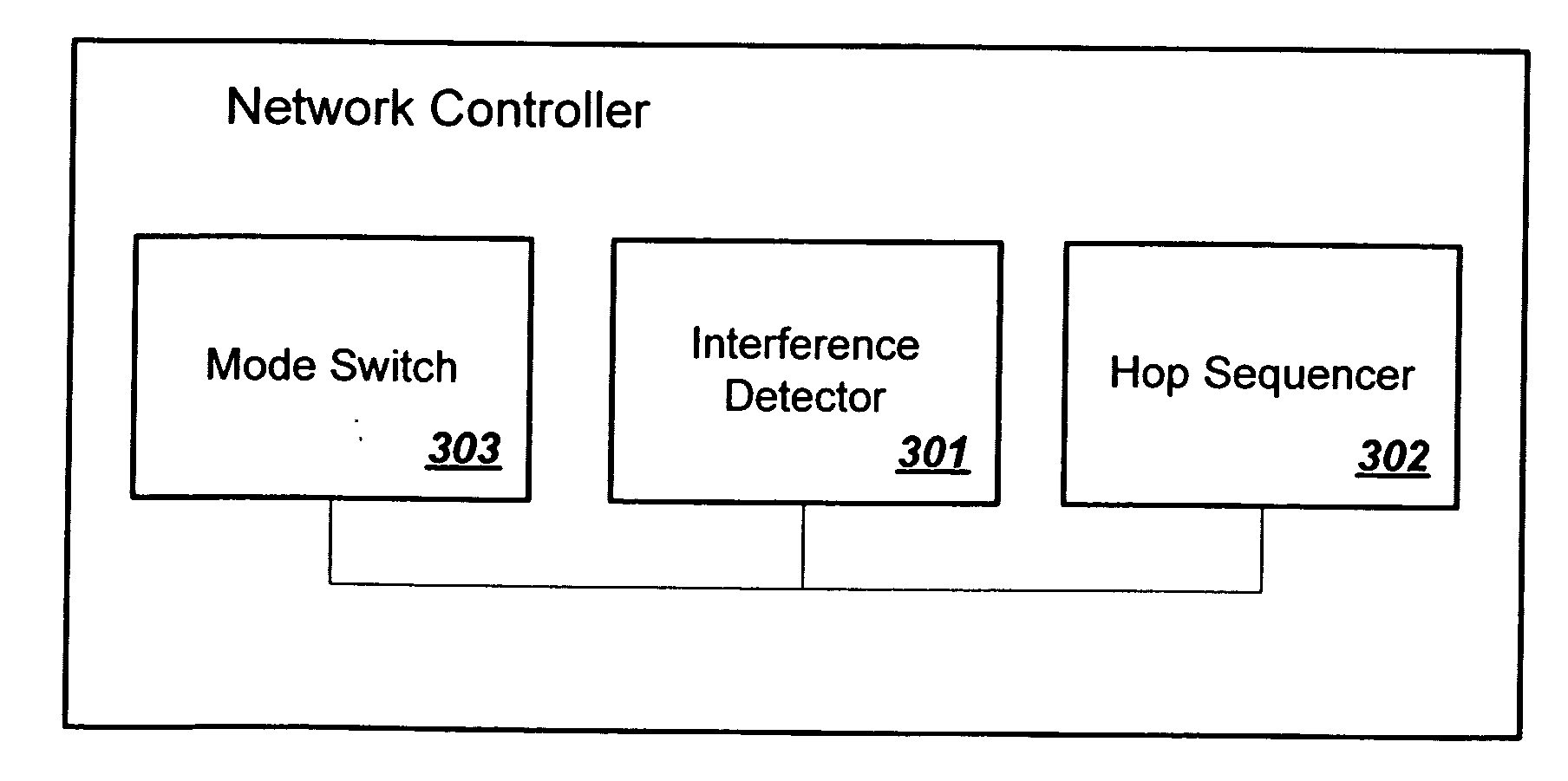Network controller having dynamic hop sequence adjustment in FHSS
a network controller and dynamic hop sequence technology, applied in the direction of transmission, electrical equipment, etc., can solve the problems of increasing the probability of collision, increasing the probability of interference resulting from neighboring piconets, and inevitable collisions, so as to achieve the effect of reducing interferen
- Summary
- Abstract
- Description
- Claims
- Application Information
AI Technical Summary
Benefits of technology
Problems solved by technology
Method used
Image
Examples
Embodiment Construction
[0018] While the present invention will be described more fully hereinafter with reference to the accompanying drawings, in which a preferred embodiment of the present invention is shown, it is to be understood at the outset of the description which follows that persons of skill in the appropriate arts may modify the invention here described while still achieving the favorable results of this invention. Accordingly, the description which follows is to be understood as being a broad, teaching disclosure directed to persons of skill in the appropriate arts, and not as limiting upon the present invention.
[0019] Although the illustrative embodiments will be described as modifications to existing Bluetooth controllers, the invention here described is applicable to frequency hopping spread spectrum controllers in general. For the most part, details concerning frequency hopping spread spectrum networks in general, and Bluetooth networks in particular, have been omitted in as much as such ...
PUM
 Login to View More
Login to View More Abstract
Description
Claims
Application Information
 Login to View More
Login to View More - R&D
- Intellectual Property
- Life Sciences
- Materials
- Tech Scout
- Unparalleled Data Quality
- Higher Quality Content
- 60% Fewer Hallucinations
Browse by: Latest US Patents, China's latest patents, Technical Efficacy Thesaurus, Application Domain, Technology Topic, Popular Technical Reports.
© 2025 PatSnap. All rights reserved.Legal|Privacy policy|Modern Slavery Act Transparency Statement|Sitemap|About US| Contact US: help@patsnap.com



